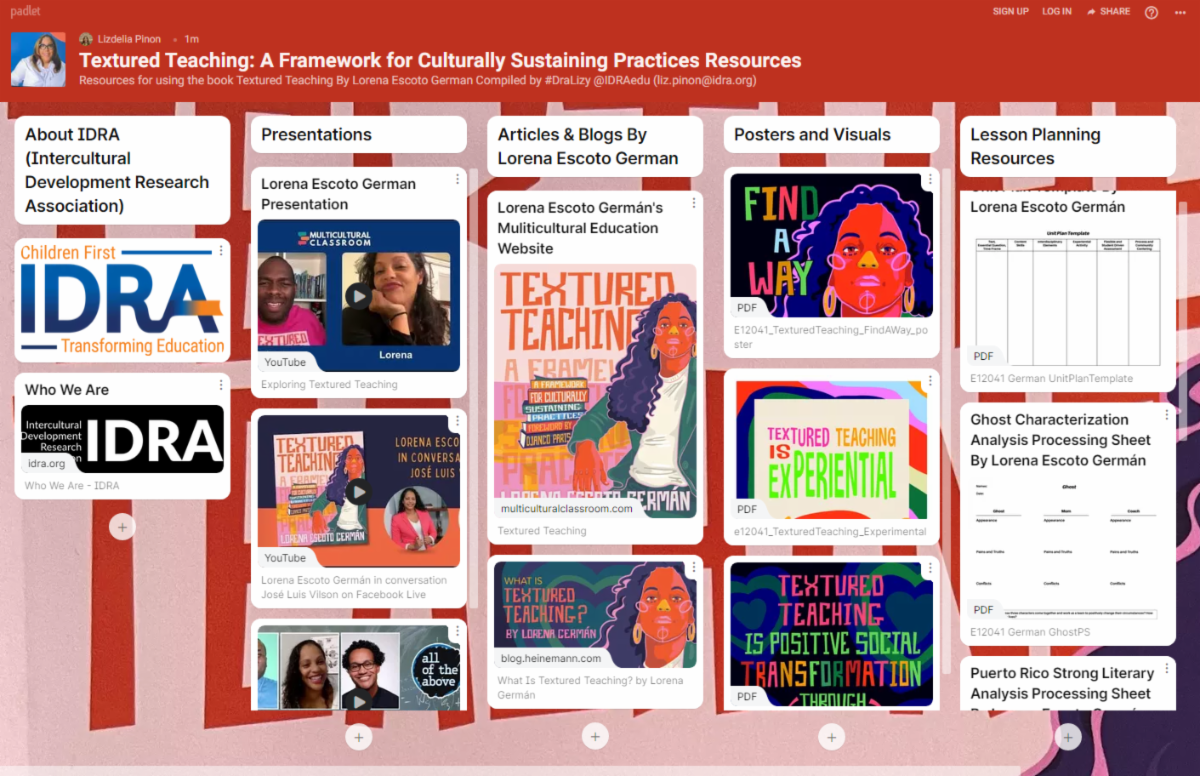• By Stephanie Garcia, Ph.D. & Dr. Lizdelia Piñón • Knowledge is Power • April 22, 2022 •
Teachers who are looking for good culturally sustaining instructional strategies should look at a new resource published a few months ago, Textured Teaching: A Framework for Culturally Sustaining Practices, by Lorena Escoto Germán.
The strategies are designed for engaging all students, welcoming their whole selves while integrating social justice throughout middle and high school learning. The framework has four components (“traits”) that we outline below.
Student-driven and community-centered teaching focuses on students, supports them, includes them and is driven by them. There is power in community, land and culture. Escoto Germán presents ideas for building rapport with students, sustaining relationships and considering the community in which we teach. One example mentioned is “Smash It” (pg. 28) in which students write on a piece of paper what they are most bothered about in their community. They then all smash their papers into a pile. And as a class, they sort through the papers and come to a consensus on one topic to address together.
Interdisciplinary teaching involves research-based exercises and discussions of historical context and making connections. It also involves integrating with other content areas for deep analysis. One example is to “find ways to supplement the core text with information that challenges students further than they thought the texts could go” (pg. 56). This can done in an interdisciplinary form of artwork, theatrics, mathematical data or statistics, etc.
Experiential teaching is physical and sensorial which makes it highly engaging and memorable. The guidebook provides ideas for experiential strategies for comprehension and analysis as well as some cautions about what not to do in practice. The five senses are a powerful way to approach experiential learning. It also makes the text memorable and allows for critical and close reading in deep ways. An example of an experiential lesson is titled, “How to Incorporate Hip-Hop into the ELA Classroom.”
Flexible teaching is humanizing for both teachers and students and allows for relationships and empathy to enter the space. An example the guidebook gives is to allow students to help create their own assessments so they feel like learning is a partnership.
As you can see, textured teaching is “what we do and how we do it” (pg. xv). Lorena Escoto Germán’s guidebook goes into great detail on strategies to help develop cultural proficiency and the skills needed to navigate the world and deconstruct harmful social practices in our society.

Check out our Padlet where we have gathered many of the book’s available resources and videos of her speaking, so that educators may access it easier.
[©2022, IDRA. This article originally appeared in the April 22, 2022, edition of Knowledge is Power by the Intercultural Development Research Association. Permission to reproduce this article is granted provided the article is reprinted in its entirety and proper credit is given to IDRA and the author.]


